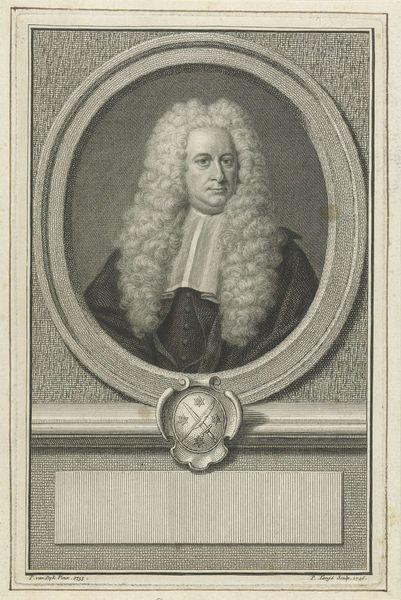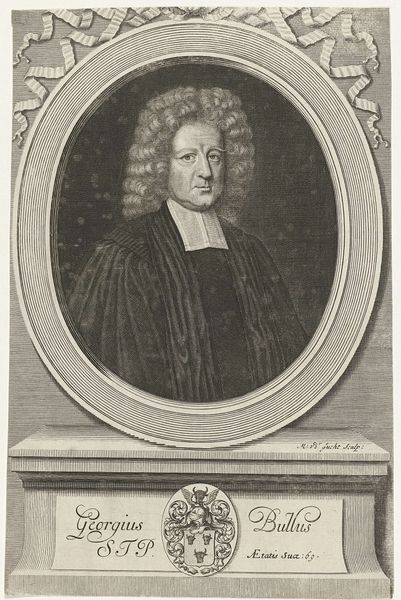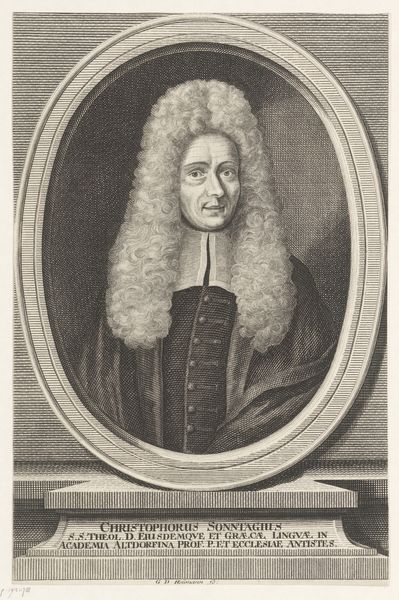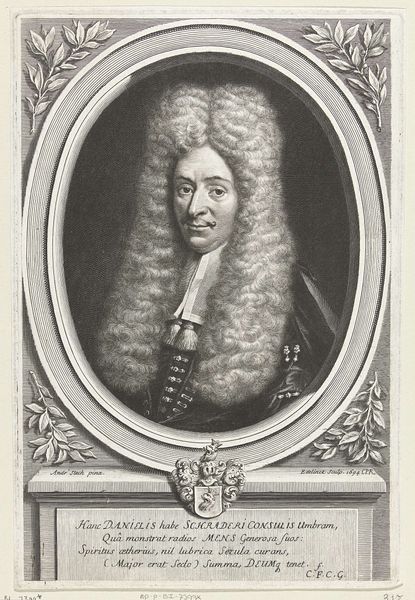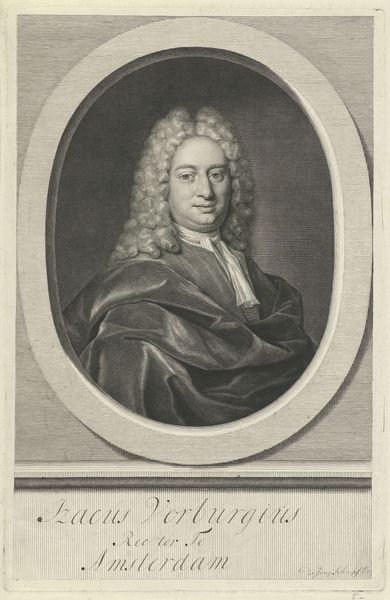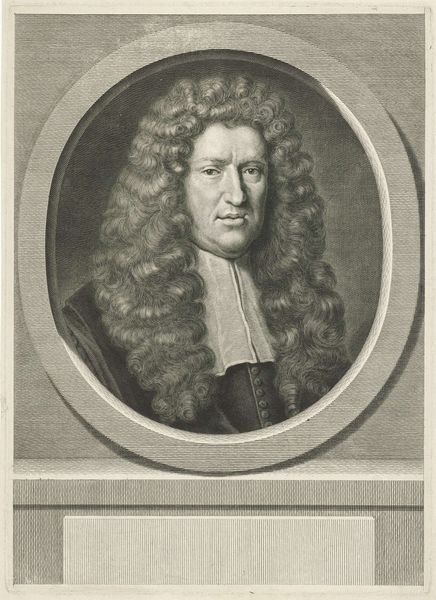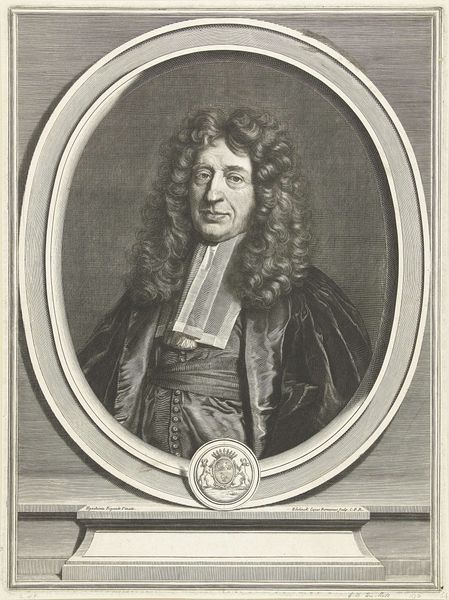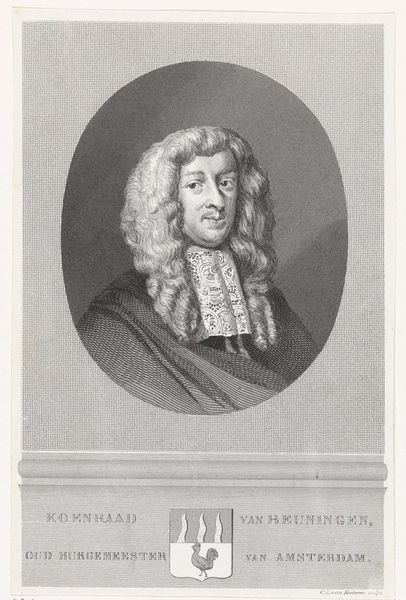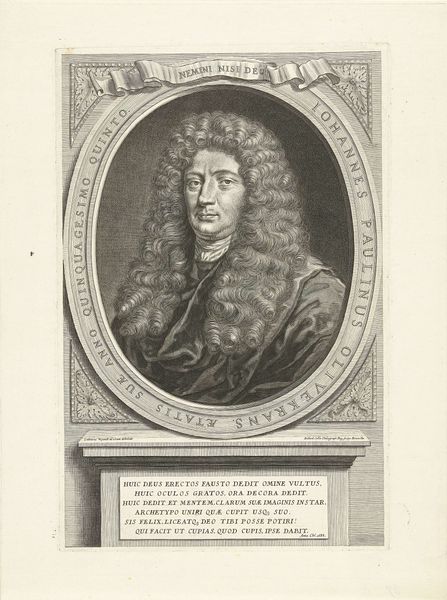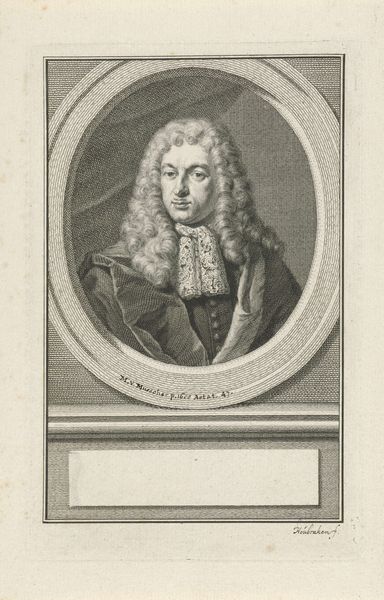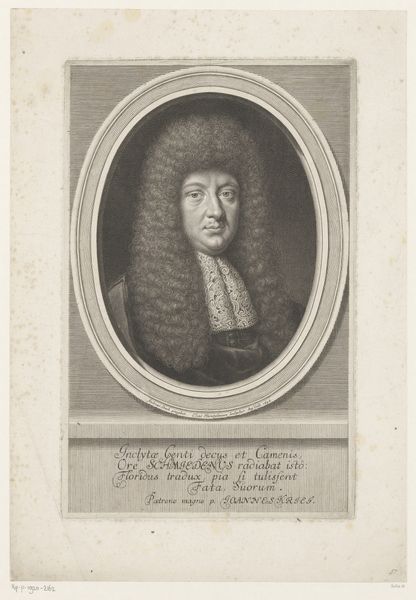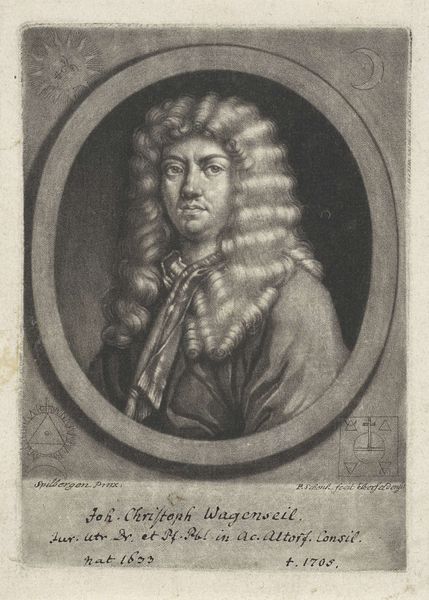
print, engraving
#
portrait
#
baroque
#
dutch-golden-age
# print
#
engraving
Dimensions: height 210 mm, width 150 mm
Copyright: Rijks Museum: Open Domain
Curator: Immediately striking is the man’s elaborate wig! A statement of status if ever I saw one. What can you tell us about this artwork? Editor: This is "Portret van Dirk Schelte," a Dutch Golden Age engraving created in 1713 by Pieter van Gunst. It resides here in the Rijksmuseum, giving us a peek into Amsterdam’s elite of the period. The choice of an engraving underscores its wide accessibility at the time. Curator: Accessible perhaps, but certainly geared toward a particular social class! This engraving makes me think about representation and power dynamics during that time. What statement did such portraits attempt to make? Was it simply a means for affluent people to be immortalized, or did it fulfill other social and political functions? Editor: The Baroque era favored portraits precisely for those reasons. Public image was crucial, reflecting the power structures of the Dutch Republic. Engravings, unlike painted portraits, could be reproduced and widely distributed. Dirk Schelte, whoever he was, clearly sought to project an image of authority and success through this medium. The wig, the clothing, even the frame—it’s all meticulously designed. Curator: I see his gaze directed towards the viewer almost accusingly. I'm curious about who he was as an individual. This leads to me question who benefitted from his power? How might our understanding shift if this were a portrait of someone on the margins of society? Considering our current political environment, this image really prompts some difficult questions of social justice and power. Editor: Indeed. Though limited to representing a slice of society, prints played a crucial role in shaping and circulating images of authority, wealth, and social identity. The accessibility of the format underscores how widely these values were propagated throughout Dutch society at the time. I’d add that recognizing this image's power informs modern artistic critique today, especially with how museums represent and discuss the Dutch Golden Age’s legacies. Curator: That’s a fascinating and troubling relationship to explore. Thank you, that gave me much to consider about its ongoing relevance! Editor: Agreed! It reminds us of the layers of context and perspective crucial to really understand and engage with the past.
Comments
No comments
Be the first to comment and join the conversation on the ultimate creative platform.
